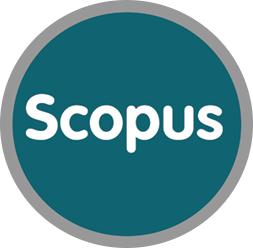Модифікування поліетерсульфонових мембран наночастинками TiO2 методом «layer-by-layer»
DOI: https://doi.org/10.15407/hftp08.03.310
Анотація
Ключові слова
Посилання
1. Alem A., Sarpoolaki H., Keshmiri M. Titania ultrafiltration membrane: preparation, characterization and photocatalytic activity. J. Eur. Cer. Soc. 2009. 29(4): 629. https://doi.org/10.1016/j.jeurceramsoc.2008.07.003
2. Yue W.-W., Li H.-J., Xiang T., Qin H., Sun S.-D., Zhao C.-S. Grafting of zwitterion from polysulfone membrane via surface-initiated ATRP with enhanced antifouling property and biocompatibility. J. Membr. Sci. 2013. 446: 79. https://doi.org/10.1016/j.memsci.2013.06.029
3. Chung Y.T., Mahmoudi E., Mohammad A.W., Benamor A., Johnson D., Hilal N. Development of polysulfone-nanohybrid membranes using ZnO-GO composite for enhanced antifouling and antibacterial control. Desalination. 2017. 402: 123. https://doi.org/10.1016/j.desal.2016.09.030
4. Alsohaimi I.H., Kumar M., Algamdi M.S., Khan M.A., Nolan K., Lawler J. Antifouling hybrid ultrafiltration membranes with high selectivity fabricated from polysulfone and sulfonic acid functionalized TiO2 nanotubes. Chem. Eng. J. 2017. 316: 573. https://doi.org/10.1016/j.cej.2017.02.001
5. Wu T., Tang B., Wu P. Development of novel SiO2-GO nanohybrid/polysulfone membrane with enhanced performance. J. Membr. Sci. 2014. 451: 94. https://doi.org/10.1016/j.memsci.2013.09.018
6. Sanches S., Nunes C., Passarinho P.C., Ferreira F.C., Pereira V.J., Crespo J.G. Development of photocatalytic titanium dioxide membranes for degradation of recalcitrant compounds. J. Chem. Technol. Biotechnol. 2017. 92(7): 1. https://doi.org/10.1002/jctb.5172
7. Konovalova V.V., Pobigaj G.A., Bartosh S.G., Burban A.F., Bruening M.L. Development of guanidine-based antifouling nanofiltration membrane by layer by layer techniques. Voda i vodooch. Technol. 2012. 3(9): 63. [in Ukrainian].
8. Salgin S., Salgin U., Soyer N. Streaming potential measurement of polyethersulfone ultrafiltration membranes to determine salt effects on membrane zeta potential. Int. J. Electrochem. Sci. 2013. 8: 4077.
9. Vikulova M.A., Kovaleva D.S., Tretyachenko E.V., Goffman V.G., Gorokhovsky A.V. Relation between sorption and photocatalytic activity of modified potassium polytitanates to different organic dyes. Uspehi Estestvoznaniya. 2015. 12: 17. [in Russian].
10. Bayramoglu G., Yilmaz M., Arica M.Ya. Immobilization of a thermostable α-amylase onto reactive membranes: kinetics characterization and application to continuous starch hydrolysis. Food Chem. 2004. 84(4): 591. https://doi.org/10.1016/S0308-8146(03)00283-8
11. Interstate Standard (GOST 25179-90). Milk. Methods of protein determination.
12. Park H., Choi W. Effect of TiO2 surface fluorination on photocatalytic reactions and photoelectrochemical behaviors. J. Phys. Chem B. 2004. 108(13): 4088. https://doi.org/10.1021/jp036735i
13. Takeuchi M., Sakamoto K., Martra G., Coluccia S., Anpo M. Mechanism of photoinduced superhydrophilicity on the TiO2 photocatalyst surface. J. Phys. Chem. B. 2005. 109(32): 15422. https://doi.org/10.1021/jp058075i
14. Langlet M., Permpoon S., Riassetto D., Berthome G., Pernot E., Joud J.C. Photocatalytic activity and photo-induced superhydrophilicity of sol-gel derived TiO2 films. J. Photochem. Photobiol., A. 2006. 181(2–3): 203. https://doi.org/10.1016/j.jphotochem.2005.11.026
15. Ashkarran A.A., Mohammadizadeh M.R. Superhydrophilicity of TiO2 thin films using TiCl4 as a precursor. Mater. Res. Bull. 2008. 43(3): 522. https://doi.org/10.1016/j.materresbull.2007.06.029
16. Jesus M.A.M.L., Neto J.T.S., Timo G., Paiva P.R.P., Dantas M.S.S., Ferreira A.M. Superhydrophilic self-cleaning surfaces based on TiO2 and TiO2/SiO2 composite films for photovoltaic module cover glass. Appl. Adh. Sci. 2015. 3(5): 1. https://doi.org/10.1186/s40563-015-0034-4
17. Martin A., Martines F., Malfeito J., Palacio L., Pradanos P., Hernandez A. Zeta potential of membranes as a function of pH. Optimization of isoelectric point evaluation. J. Membr. Sci. 2003. 213(1–2): 225. https://doi.org/10.1016/S0376-7388(02)00530-6
18. Patil S., Sandberg A., Heckert E., Self W., Seal S. Protein adsorption and cellular uptake of cerium oxide nanoparticles as a function of zeta potential. Biomaterials. 2007. 28(31): 4600. https://doi.org/10.1016/j.biomaterials.2007.07.029
19. Mahlambi M.M., Mahlangu O.T., Vilakati G.D., Mamba B.B. Visible light photodegradation of Rhodamine B dye by two forms of carbon-covered alumina supported TiO2/Polysulfone Membranes. Ind. Eng. Chem. Res. 2014. 53(14): 5709. https://doi.org/10.1021/ie4038449
20. Madaeni S.S., Rahimpour A. Effect of type of solvent and non-solvents on morphology and performance of polysulfone and polyethersulfone ultrafiltration membranes for milk concentration. Polym. Adv. Technol. 2005. 16(10): 717. https://doi.org/10.1002/pat.647
21. Tong P.S., Barbano D.M., Rudan M.A. Characterization of proteinaceous membrane foulants and flux decline during the early stages of whole milk ultrafiltration. J. Dairy Sci. 1988. 71(3): 604. https://doi.org/10.3168/jds.S0022-0302(88)79597-1
22. Atra R., Vatai G., Bekassy-Molnar E., Balint A. Investigation of ultra- and nanofiltration for utilization of whey protein and lactose. J. Food Eng. 2005. 67(3): 325. https://doi.org/10.1016/j.jfoodeng.2004.04.035
23. Razavi S.M.A., Mortazavi S.A., Mousavi S.M. Effect of transmembrane pressure on fouling and membrane performance during ultrafiltration of milk. J. Water Soil Sci. 2006. 10(2): 191.
24. Limsawat P., Pruksasri S. Separation of lactose from milk by ultrafiltration. As. J. Food Ag-Ind. 2010. 3(2): 236.
25. Roesink H.D.W., Beerlage M.A.M., Potman W., Boomgaard Th., Mulder M.H.V., Smolders C.A. Characterization of new membrane materials by means of fouling experiments. Adsorption of BSA on polyetherimide-polyvinylpyrrolidone membranes. Colloids. Surf. 1991. 55: 231. https://doi.org/10.1016/0166-6622(91)80095-6
26. Nelson B.K., Barbano D.M. A microfiltration process to maximize removal of serum proteins from skim milk before cheese making. J. Dairy Sci. 2005. 88(5): 1891. https://doi.org/10.3168/jds.S0022-0302(05)72865-4
27. Pontalier P.-Yv., Ismail A., Ghoul M. Mechanisms for the selective rejection of solutes in nanofiltration membranes. Sep. Purif. Technol. 1997. 12(2): 175. https://doi.org/10.1016/S1383-5866(97)00047-6
DOI: https://doi.org/10.15407/hftp08.03.310
Copyright (©) 2017 I. S. Kolesnyk, O. Ya. Dzhodzhyk, V. V. Mukoida, V. V. Konovalova, S. M. Tsaryk, A. F. Burban


This work is licensed under a Creative Commons Attribution 4.0 International License.



